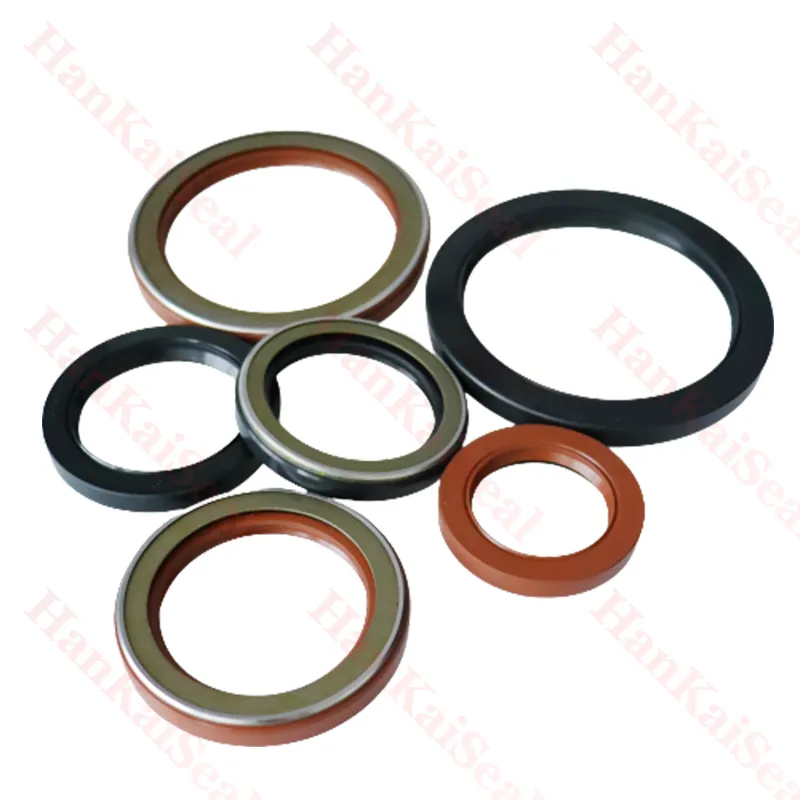8 сар . 15, 2024 07:49 Back to list
Steps for Replacing Seals in Hydraulic Cylinders for Optimal Performance and Longevity
Hydraulic Cylinder Seal Replacement A Comprehensive Guide
Hydraulic cylinders are crucial components in various machinery and equipment, providing the necessary force to perform tasks such as lifting, pushing, and pulling. Over time, these cylinders may develop leaks due to wear and tear on their seals, leading to reduced efficiency and potential damage. Replacing hydraulic cylinder seals is vital for maintaining optimal performance. This article outlines the essential steps and considerations for a successful hydraulic cylinder seal replacement.
Understanding Hydraulic Seals
Hydraulic seals are designed to prevent fluid from leaking out of the cylinder and contaminants from entering the system. They can be made from various materials, including rubber, polyurethane, and PTFE, each chosen based on factors like operating temperature, pressure, and the type of hydraulic fluid used. Over time, seals can deteriorate due to aging, exposure to harsh chemicals, or extreme pressure and temperature fluctuations.
Signs of Seal Failure
Identifying the signs of seal failure early on can prevent more significant issues down the line. Common indicators include
1. Visible Leakage Fluid pooling around the cylinder or drips from the seal area. 2. Reduced Performance Difficulty in moving the cylinder, inconsistent motion, or a decrease in lifting capacity. 3. Increased Noise Unusual sounds, such as grinding or chattering, often signify that internal components are experiencing excessive wear.
Preparing for Seal Replacement
Before beginning the seal replacement process, it’s crucial to gather the necessary tools and supplies. Typically, you will need
- A clean workspace - Safety gear (gloves, goggles) - Hydraulic seal kit (specific to the cylinder model) - Tools such as wrenches, screwdrivers, and seal installation tools - Cleaning supplies (degreaser, rags)
Step-by-Step Seal Replacement Process
hydraulic cylinder seal replacement

1. Depressurize the System Ensure that the hydraulic system is completely depressurized to avoid accidents. This is typically done by shutting off the pump and actuating the cylinder to release any stored pressure.
2. Remove the Cylinder Disconnect the hydraulic lines, and if necessary, remove the cylinder from its mounting. Be sure to note the orientation and position for reinstallation.
3. Disassemble the Cylinder Carefully unscrew and separate the cylinder components. Take care to note how parts fit together, as this will aid in reassembly.
4. Remove Old Seals Gently extract the old seals using a seal puller or suitable tool. Be cautious not to damage the cylinder surface during this process.
5. Clean the Cylinder Thoroughly clean the cylinder’s interior and the grooves where the seals sit. Use a degreaser and rags to remove old oil and debris.
6. Install New Seals Place the new seals into the appropriate grooves, ensuring they fit snugly and are seated correctly. Lubricate the seals lightly with hydraulic fluid to facilitate installation.
7. Reassemble the Cylinder Carefully reassemble the cylinder parts in the correct order. Make sure all components are aligned properly and tightened according to manufacturer specifications.
8. Reinstall the Cylinder Once reassembled, reinstall the cylinder back to its original position and reconnect the hydraulic lines.
9. Test the System Re-pressurize the system and check for leaks. Operate the cylinder through its full range of motion to ensure it functions correctly.
Conclusion
Replacing hydraulic cylinder seals is a manageable task that can extend the life of the cylinder and improve the performance of hydraulic systems. By recognizing the signs of seal failure, preparing adequately, and following the outlined steps, operators can conduct a successful seal replacement. Regular maintenance and timely replacement of seals not only enhance efficiency but also minimize downtime and repair costs associated with hydraulic system failures.
-
Cassette Seal 15018014.5/16 Hub Oil Seal | OEM Quality 000051785
NewsAug.31,2025
-
DKBI Hydraulic Wiper Seal 20x32x6/9 | Dustproof & Standard Oil Seal
NewsAug.30,2025
-
Eaton 5423 6423 Motor Repair Seal Kit: Premium Quality & Fit
NewsAug.29,2025
-
25x47x7 High Quality Tcv Oil Seal for Hydraulic Pump
NewsAug.28,2025
-
Wiper Oil Seal: Our Commitment to Clean Hydraulics
NewsAug.13,2025
-
Hydraulic Oil Seal for Self Discharging Cars
NewsAug.13,2025
-
Hub Oil Seal for Agricultural Tractor Hubs
NewsAug.13,2025
Products categories
















